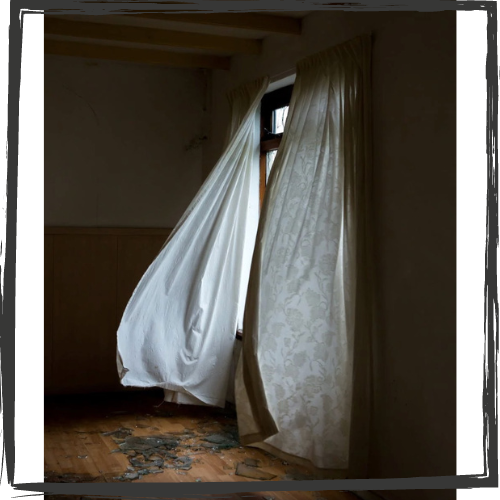By Robyn E. Brickel, MA, LMFT, Brickel & Associates, LLC
Life is hard, but we can learn healthy strategies to get unstuck, heal from trauma and feel safe inside our window of tolerance
The hard parts of life happen every day. Sometimes everything feels hard, especially for trauma survivors:
- Being in traffic
- Arguing with a partner
- Running late
- A dog growling
- Rising gas prices
- A certain smell
- Someone’s tone of voice
- An interaction that feels uncomfortable
- The news / war / feeling unsafe / COVID
- The list goes on….
People without trauma in their history know they can navigate these hard parts, moving past them rather quickly. Experiencing, feeling and being able to manage and regulate emotions fairly easily means those emotions exist inside a window of tolerance.
Unfortunately, for those of us who have experienced trauma, it’s different. Even though the experience, the hard part of life, is something others may see as “not that big a deal,” like watching the news, sitting in traffic or arguing with a friend — it triggers us. It tells our bodies, “Danger! You're not safe!” It reminds us consciously or unconsciously of many aspects of life that were dangerous or unsafe.
Suddenly, we feel scared, anxious or uncomfortable. In that moment, it’s not our wise, adult thinking-brain that’s in charge, it's just the limbic system. We're in fight, flight or freeze.
When our thinking brain is offline, we're not able to notice that we're safe today, right now, sitting and watching the news from home with the door locked. It feels huge. It feels big and scary and horrible. Trauma survivors are often living — most or all the time — in these triggered states!
It’s very difficult to make wise adult decisions in this triggered state, which is the reason trauma survivors may end in situations where even more trauma occurs. We've learned to survive in any way possible even if that means using harmful coping mechanisms, such as:
- Substances
- Self-harm
- Eating disordered behaviors, including overexercise
- Dissociation
- Disconnected sexual experiences
- Etc!
While these coping mechanisms may help in the moment, they are "maladaptive" because they aren’t healthy. Sometimes, it may feel like they’re working, like they’re helping because we feel good, warm, happy, silly, sleepy, relaxed, numb, distracted.

Yet, as time goes by, we need more alcohol, more drugs, deeper cuts, more something … to move through the world and its hardness.
Why do we use unhealthy coping mechanisms?
As trauma survivors, we don’t have a lot of bandwidth to deal with the hard parts of life in a healthy way. It's not our fault!
Growing up with any kind of attachment trauma or abuse without experiences of safety, it's difficult to return to an un-triggered state. Our bodies and brains just don’t know how. That's why we reach for the thing that “helps” us cope. When we're triggered into a body memory or flashback and scared, it’s the only way to get ourselves out of that bad-feeling place.
We're outside the window of tolerance. The earlier the trauma occurred in life, the harder it can be to get back inside the window where we feel safe.
This process may create a cycle in which we feel even worse – resigned, depressed, alone, lost, angry, shamed, self-hating. We blame ourselves for the trauma and feel ashamed about the coping mechanism even though it’s not our fault. We may cry out for help in ways that others can't see or hear. Then, we may feel stuck in that awful, triggered place and in that repetitive cycle.
How do we end this cycle?
Therapy can help us get unstuck. It can help us learn how to recognize and return to safety — without the need for maladaptive coping skills. It can help us learn to ride the wave of emotion and know we'll be okay.
In trauma-informed therapy, we work to widen or expand the emotional window of tolerance, so even in hard situations, we can stay grounded in the present and see how to make wise adult decisions. We accomplish this in stages:
- Stage 1: Safety and stabilization to build healthier coping behaviors here and now, making life more safe and stabilized so our adult brain can make decisions
- Stage 2: Processing to understand the past and how it hurt and continues to reverberate; moving toward current day healing and repair allows us to feel those feelings, grieve and realize we're safe in the present moment
- Stage 3: Integration to view the past through the lens of your new skills and safety in life and relationships today.
Some of the aspects that will help you along the way are:
- Sobriety
- Healthy eating and healthy movement or exercise
- Reparative relationships
- Self-compassion
- Self-care
- Reducing the stigma around mental health care
- Using your voice
- Setting boundaries, and
- Knowledge.
Do the hard parts of life get easier?
Yes and no. The hard parts of life exist for everyone. Watching the news for example, is hard regularly. After healing from past trauma and pain, we may not feel as triggered by the everyday hard parts of life or, if we do, our ability to recover — return to the window — is faster. We'll notice that we're safe in the moment, and not all scary moments will send us back into the trauma. When we can manage the hard parts of life without being triggered, they'll feel smaller.
Like Glennon Doyle says, we can do hard things.

Read the original article here.
Robyn Brickel, MA, LMFT is the clinical director at Brickel and Associates, LLC in Virginia.


